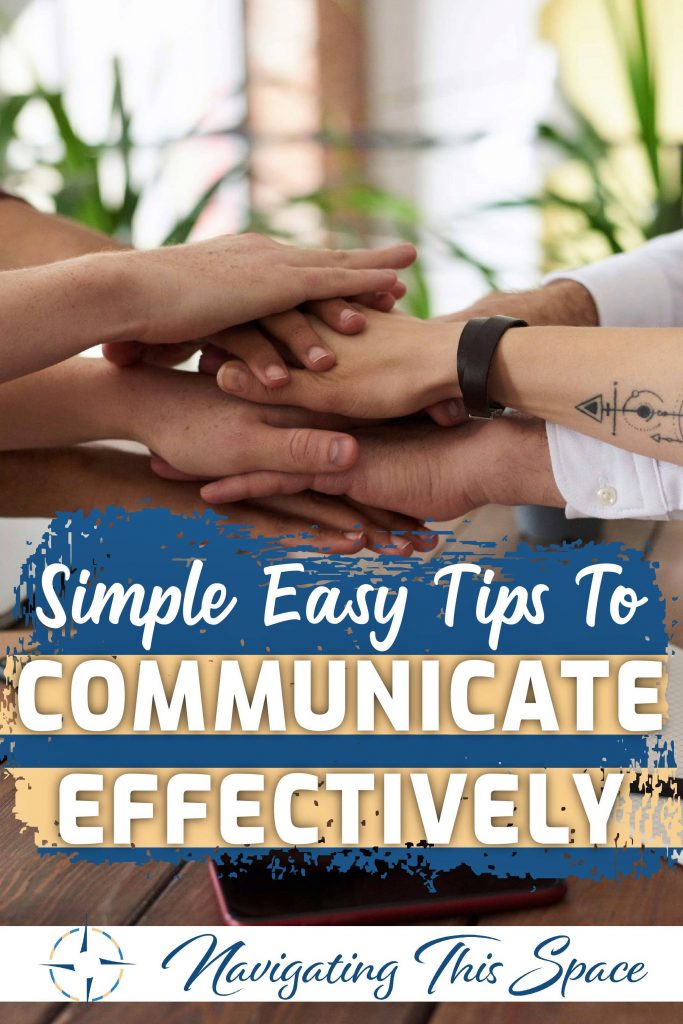Say what you mean, nothing more and nothing less. It is the essence and building block of developing an effective communication principle. The problem that most people face with this simple principle is that they do not know how to say what they mean.
Communication has to be clear, concise, correct, complete, coherent, concrete, and courteous. Having exceptional communication skills depends on how thoroughly the person receiving your message understands and interprets it.
Sometimes I struggle to communicate because I am afraid that my words may come off as harsh. So I researched how to develop my communication skills, and what I found was too valuable not to share.
What are the principles of communication?
The seven C’s of communication—a term first coined in the book Effective Public Relations by the University of Wisconsin Professor Scott M. Cutlip and Allen H. Center in 1952—laid out the core principles of what makes communication effective.
The principle of effective communication relies on
- Clearness
- Conciseness
- Correctness
- Completeness
- Coherence
- Concreteness
- Courtesy
All these different factors play a vital part on how your message is received. Let’s break down each section to fully understand how to communicate.
The aspects of an effective communication principle
Clearness
The clarity of your words determines the level of difficulty you will face.
For example:
Troy needs to hire an assistant to help with his workload as a photographer. He needs someone to organize, retouch, and get his shots ready for the approval of his clients. He puts out an ad with the title—SEARCHING FOR A PHOTOGRAPHER’S ASSISTANT— the calls came pouring in a few days after his ad went out.
Troy is frustrated because the applicants who responded to the ad didn’t have the qualifications that he was looking for. He needed a graphic designer with exceptional organizational skills. Because he didn’t know how to communicate what he needed, he ended up getting a lot of inexperienced wannabe photographers calling him.
If Troy had worded his ad differently, he would have had an entirely different experience.
Conciseness
Saying what you mean in as few words as possible leaves no room for error. If what you’re saying cannot be summed up in one or two sentences, then you need to reevaluate your message.
For example:
Tracy likes her job but she can’t seem to get along with her co-workers. They believe she’s weird for not wanting to socialize with them since they don’t understand that being social makes Tracy feel awkward.
Instead of communicating in a few words, Tracy will engage in a long drawn-out explanation of why she can’t make it to the office party.
By simply saying, “I don’t like large gatherings because they make me nervous,” Tracy would avoid all pushy invites to the next events.
Correctness
Using the correct terms and words makes a huge difference in ineffective communication. Every skill requires jargon, but not everyone will understand what they mean.
For example:
I have certain friends with whom I can have “nerd talks”, while others stare blankly trying to understand what on earth we’re actually talking about.
The technical language that comes with graphic design and sound editing is very different. If I try to explain why a font is behaving like an object to someone who understands how to fix the peaks and distortion in an audio file without first explaining the software, the rules, and the problem, they’ll be utterly confused when I finish talking.
Understand that not everyone speaks the same technical language. To communicate effectively you have to use the correct words. Keep it so simple that a child can understand with ease.
Completeness

Every message requires an action. From simply pondering on the information to taking action, if needed, the receiver of your message should always take something away.
For example:
You call your best friend to catch up with their life and give them an update on yours. The conversation goes on for hours and when you finally hang up, you are well informed on past events and have a few ideas for a creative goal to work towards.
The long conversation engaged you enough to: 1. Stay on the phone talking for hours, and 2. Spark ideas on something you didn’t think about before.
That communication sparked a few actions:
- Pondering on the conversation long after it ended
- Sparked new ideas for new adventures
- Satisfied your curiosity about your friend’s well-being
A message that does not spark action is a waste of words.
Coherent
Is your message straightforward or is it all over the place? The ability to stay on point and not jump on every impulsive idea that strikes you while you’re speaking is a requirement for effective communication.
For example:
In the wonderfully animated movie UP, the dog character named Doug was explaining why he was able to speak and in the middle of his explanation, he got distracted.
If you follow those impulses into distraction, your message will be received as jumbled and incoherent. Stay focused on the topic.
Concreteness
Can the listener relay your message back to you in their own words? Strong communication skills paint a picture that allows no error for interpretation.
For example:
Tina likes to share how she imagines her perfect day to be with her partner, Tammy. Every night when she got home from the job she hated, she would start telling the story of her perfect day in detail. One day, Tammy planned a surprise for Tina. Tammy was going to create the perfect day for her. Tina was off from work for the next three days, so the timing was perfect to execute her plan.
Tina noticed something was different when she arrived home, but she was too tired to address it. This was perfect for Tammy because the surprise was set for the next morning.
The next morning, Tammy gently shook Tina awake at 4 a.m. and told her that they had a flight to catch. Tina was not allowed to ask any questions because it was a surprise.
Tina, being too sleepy to fuss, slipped into the clothes that were already chosen for her and headed off to the airport. Blindfolded and wearing noise-canceling headphones, her excitement grew. She trusted Tammy and knew that she was up to something great, so she decided not to spoil the surprise.
When they arrived at their destination and Tammy removed Tina’s headphones and blindfold, she realized that she was in the place she spoke about every evening.
Hidden in nature overlooking the forest, far away from city life and the tooting of vehicle horns, Tammy was able to create the perfect day for her partner, Tina.
Because Tina explained what she wanted in detail, her partner was able to create the exact experience she craved.
Leave nothing to the chance of misinterpretation.
Courtesy
Are you considering the listener’s needs? Even though some types of communications need to be stern, everything can be done empathetically.
For example:
Toni was a loving mother to her son, Tim. Tim was at the Terrible Twos phase where he was learning defiance. Even though Toni hated to take a serious tone with Tim, she understood that sometimes being a mother means you have to be tough.
Instead of screaming and treating Tim aggressively when he’s done something wrong, Toni lowers her voice, clenches her teeth, and gives a serious tone of talk. Tim understands this tone of language very well. He knows whenever his mom uses that tone with him that he’s done something very bad.
Even though Toni had to be stern, she still maintained a welcoming atmosphere so Tim could openly express his reasons for misbehaving.
Choose kindness
Everyone is going through something in their lives, being courteous could be the difference between having your message received or rejected instantly.
When you include all the different aspects of having an effective communication principle in your conversations, you begin to build a solid foundation for expanding your communication skills.
Being clear, concise, correct, complete, coherent, concrete, and courteous allows you to say exactly what you mean, nothing more and nothing less.





